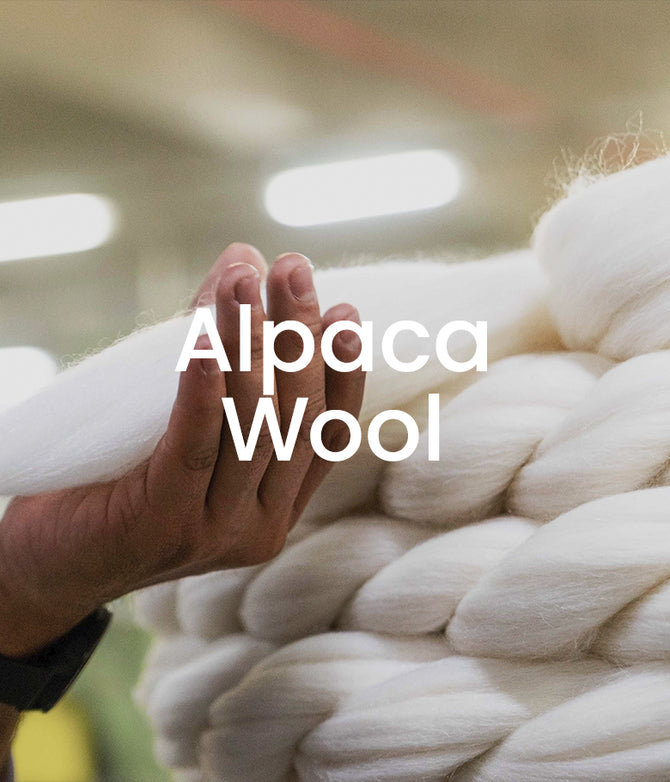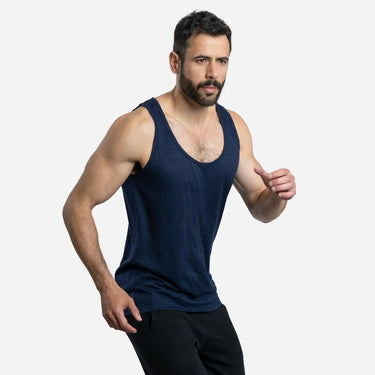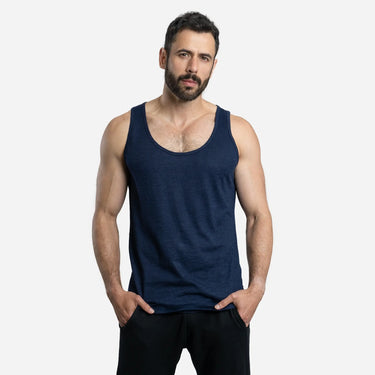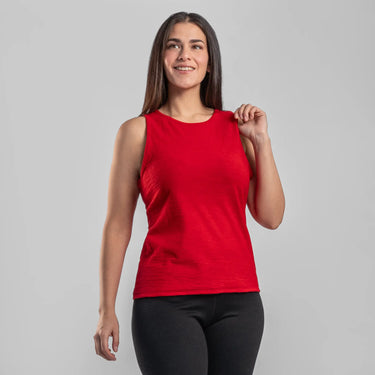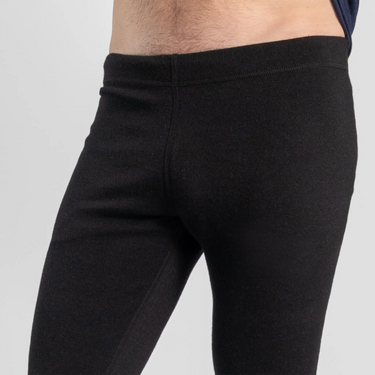Fashion for the Future:
A World Environment Day Reflection
Published June 5, 2025
1. Say Goodbye to Single-Use Plastics
Single-use plastics are a huge environmental problem, but small tweaks in your daily habits can make a big difference:
- Bring reusable bags: Make or buy groceries and produce bags to use instead of plastic ones. Keep them by the door or in your car so you never forget them.
- Ditch bottled water: Invest in a reusable water bottle [1]. If tap water isn’t safe, boil or filter it instead.
- Carry a reusable coffee cup: Even “eco-friendly” disposable cups create waste if not disposed of properly.
- Pack a zero-waste kit: Include bamboo or metal cutlery, a reusable straw, and a container for takeout. It might take practice, but soon it’ll feel natural.
2. Use Less Water and Energy
Every drop counts, and every watt matters. Here are a few small changes to reduce your footprint:
- Shorten your showers: A quick shower saves both water and energy. Bonus: it’s better for your skin too! [2]
- Turn off the lights: Unplug appliances and switch off lights when you’re not using them [3].
- Hang clothes to dry: Whenever possible, skip the dryer and hang your clothes. It’s gentler on fabrics and the planet.
- Flush smarter: If your toilet has an eco-flush option, use it. No eco-flush? Place a filled bottle in the tank to reduce water per flush.
At Arms of Andes we make our gear from 100% Royal Alpaca Wool of 18-18.5 microns.
3. Make Eco-Conscious Food Choices
Food is one of the easiest ways to live more sustainably:
- Buy local and seasonal: This reduces transportation emissions and supports local farmers [4].
- Cook from scratch: Homemade meals usually come with less packaging and waste.
- Be mindful about meat: Choose ethically raised options, like free-range chicken or grass-fed beef, and support sustainable farming practices. Exploring plant-based meals occasionally can also make a difference [5].
- Opt for sustainable groceries: Shop at packaging-free or bulk stores. No access? Buy in bulk at your regular store to minimize waste.
4. Rethink Your Transportation Habits
How you get around affects your carbon footprint. Start small:
- Walk or bike more: Even once a week can make a difference.
- Use public transport: Replace car trips with bus or train rides when possible [9].
- Carpool: Sharing rides with colleagues or friends reduces emissions.
- Fly less: For shorter trips, consider buses or trains. Offset your carbon emissions for long flights.
5. Choose Sustainable Fashion
The fashion industry is one of the largest polluters, but your wardrobe can make a difference:
- Avoid fast fashion: Look for quality over quantity. Cheaper often means corners were cut in ethics and sustainability.
- Buy second hand: Thrift stores and online resale platforms are great for finding unique, affordable items.
- Support eco-conscious brands: Do your research and choose brands that prioritize sustainability, like Arms of Andes, which uses 100% alpaca wool and natural dyes [6].
- Host clothing swaps: A fun way to give new life to unused items in your closet [7].

6. Upgrade Your Hygiene and Cleaning Habits
Small changes to your personal care and cleaning routines can have a big impact:
- Switch to bamboo* toothbrushes: Look for ones with compostable bristles and packaging.
- Choose steel razors: A durable, waste-free alternative to disposable razors.
- Use natural options: Biodegradable shampoos, soaps, and detergents are better for the planet.
- Use menstrual cups and fabric sanitary towels: They take a little getting used to, but you won’t go back when you do!
- Clean with vinegar and baking soda: These simple ingredients work wonders around the house and are free of harmful chemicals [8].
* When choosing products made from bamboo, try to ensure the bamboo comes from sustainable sources.
7. Embrace Nature and DIY Solutions
Spending time outdoors and trying DIY solutions are both fun and sustainable:
- Grow your own vegetables: Even a small herb garden on a windowsill can make a difference.
- Start composting: Turn food scraps into nutrient-rich compost for your garden. No garden? Check if your city collects food waste.
- Connect with nature: Spending time outside reduces stress and reminds us why protecting the planet matters.
- Join community initiatives: Participate in clean-ups or tree-planting events.
8. Be Mindful About Waste
Rethinking how you handle waste is key to sustainable living:
- Reuse before you recycle: Find new uses for things before throwing them away.
- Donate or swap: Let someone else enjoy what you no longer need.
- Avoid expedited shipping: One-day deliveries often mean more vehicles on the road, increasing emissions.
Sustainable living starts with REDUCING waste, REPAIRING and/or REUSING broken/unused items, before RECYCLING or, when possible, COMPOSTING them.
Why Small Steps Matter
You might think, “Will my tiny changes really help?” The answer is yes. If everyone made just one or two of these adjustments, the collective impact would be enormous. And remember, you don’t have to do everything at once. Pick a couple of these tips to start with, and add more as you go. Before you know it, living sustainably will feel like second nature.
So, are you ready to make 2024 your most sustainable year yet? Small steps today can lead to a greener tomorrow. Let’s get started—one habit at a time!

At Arms of Andes we make our gear from 100% Royal Alpaca Wool of 18-18.5 microns.
Reading time: 5 minutes
By Jordy Munarriz
Each year, June 5th invites us to pause and reflect on the state of our natural world. World Environment Day is not just a date on the calendar—it’s a global moment of awareness, of recalibration, and of responsibility. While many industries contribute to the environmental challenges we face, fashion industries have an immense potential to regenerate ecosystems, protect biodiversity, and foster cultural resilience. But only if we choose to do things differently.
Sustainable Animal Fibers and Regenerative Grazing
One of the most powerful shifts in recent years is the movement toward sustainable animal fiber systems, especially in regions with long-standing relationships to pastoralism. Unlike industrial livestock operations that rely on monoculture feed and produce high methane emissions, regenerative grazing models—particularly those involving animals adapted to local ecosystems, like alpacas or sheep—are proving that fiber production can be part of ecological restoration [1].
In the Andean highlands, for example, alpacas have been part of the landscape for thousands of years. Their padded feet are gentle on fragile mountain soils, avoiding compaction, while their selective grazing behavior encourages native grassland regeneration [1]. Recent studies show that alpaca grazing can actually improve soil structure, increase organic matter, and support the return of native plant species in degraded highland areas [1]. Their waste further contributes to nutrient cycling, enriching the soil naturally.
These regenerative models contrast sharply with conventional agriculture, which has led to the loss of an estimated 30–75% of organic carbon in soils globally [2]. But with well-managed grazing, ruminants like alpacas can become part of the solution. Rather than accelerating degradation, they can improve soil health, sequester carbon, and reduce erosion—benefits that, when carefully balanced, can even help offset their methane emissions [2,3].

Animal Welfare in Fiber Production
Beyond the environmental role of sustainable herding, the treatment of animals themselves has come under greater scrutiny. The Five Freedoms of Animal Welfare, established by the World Organisation for Animal Health (WOAH, formerly OIE), have become foundational principles in responsible animal husbandry. These include [4]:
- Freedom from hunger, thirst, and malnutrition.
- Freedom from physical and thermal discomfort.
- Freedom from pain, injury, and disease.
- Freedom from fear and distress.
- Freedom to express natural behaviors.
In ethical fiber production, especially in the luxury segment, these freedoms are increasingly seen not as aspirational—but as non-negotiable [4]. Certifications and direct sourcing models help ensure that animals like alpacas and sheep are raised not merely as production units, but as sentient beings, with dignity and care deeply embedded in the systems that depend on them.
When it comes to the fiber itself, alpaca wool is an extraordinary example of form meeting function. It's lightweight, water-resistant [5], and doesn’t contain lanolin, which makes it hypoallergenic and ideal for sensitive skin [6,7]. Alpaca fiber also has a longer lifespan compared to many other wools, which directly combats the throwaway culture of fast fashion. A garment that lasts decades is a garment that doesn’t end up in landfill.


6. Upgrade Your Hygiene and Cleaning Habits
Small changes to your personal care and cleaning routines can have a big impact:
- Switch to bamboo* toothbrushes: Look for ones with compostable bristles and packaging.
- Choose steel razors: A durable, waste-free alternative to disposable razors.
- Use natural options: Biodegradable shampoos, soaps, and detergents are better for the planet.
- Use menstrual cups and fabric sanitary towels: They take a little getting used to, but you won’t go back when you do!
- Clean with vinegar and baking soda: These simple ingredients work wonders around the house and are free of harmful chemicals [8].
* When choosing products made from bamboo, try to ensure the bamboo comes from sustainable sources.
7. Embrace Nature and DIY Solutions
Spending time outdoors and trying DIY solutions are both fun and sustainable:
- Grow your own vegetables: Even a small herb garden on a windowsill can make a difference.
- Start composting: Turn food scraps into nutrient-rich compost for your garden. No garden? Check if your city collects food waste.
- Connect with nature: Spending time outside reduces stress and reminds us why protecting the planet matters.
- Join community initiatives: Participate in clean-ups or tree-planting events.
At Arms of Andes we make our gear from 100% Royal Alpaca Wool of 18-18.5 microns.

Dyes: Natural, Certified, and Safe
But the sustainability of a garment doesn’t end with the fiber. The dyeing process is one of the most chemically intense stages in textile production—often hidden from view, but with serious consequences for both people and ecosystems. Today, more than 3,600 synthetic dyes are in use across the global fashion industry, involving over 8,000 different chemicals in processes such as dyeing, fixing, and printing [8]. Many of these substances are derived from petroleum, and nearly 40% of dyes contain chlorinated compounds, some of which have been linked to carcinogenic effects and persistent environmental toxicity [8,9].
These chemicals don’t just disappear—they often flow into rivers and soil systems in regions where environmental regulations are weak or poorly enforced [8]. The result is long-term damage to aquatic ecosystems, human health, and local farming communities [9].
However, not all dyes are created equal. Plant-based and insect-derived dyes—like indigo or cochineal—offer naturally vibrant tones with a fraction of the ecological cost [10]. When properly managed and certified, these natural dyes can be both safe and effective. Standards like GOTS (Global Organic Textile Standard) ensure that even natural additives and mordants are free from harmful toxins, and that wastewater is treated before returning to the environment [11].
Details Matter: Every Component Counts
A garment’s components matter just as much as the fabric itself. That includes zippers, buttons, elastics, threads, and labels—all of which contribute to its final environmental footprint. While often treated as secondary details, these non-textile elements can represent a significant portion of a garment’s total impact, particularly when made from synthetic materials or complex blends that resist breakdown or recycling [12,13].
Studies show that integrating natural or recyclable materials across all garment components not only reduces the environmental footprint, but also simplifies post-consumer management, whether through composting, repair, or material recovery [13]. For a piece to be truly biodegradable or compostable, every element—down to the smallest stitch—must be free of synthetic coatings and chosen with circularity in mind.

Traceability and Transparency in Fashion
This brings us to one of the most important—and often neglected—aspects of sustainable fashion: traceability. It’s not just about labeling where something is made, but understanding who made it, how it was made, and under what conditions. This level of accountability does more than just build consumer trust—it becomes a tool for change. Traceability empowers people to make informed choices, and it puts pressure on brands and suppliers to improve environmental practices and uphold fair labor conditions [14].
Moreover, traceability is key to social and environmental justice in the textile industry. Without clear data on production processes or waste streams, it becomes nearly impossible to implement truly circular systems or to ensure that those who make our clothes are protected and respected [15].
At Arms of Andes we make our gear from 100% Royal Alpaca Wool of 18-18.5 microns.
160 UltralightWomen's Alpaca Wool
Hiking T-Shirt
160 Ultralight
Relaxed FitWomen's Alpaca Wool Leggings 300
Lightweight

For snowboarders, skiers, and winter hikers, weight matters. Every gram counts when you're climbing, carrying gear, or navigating the slopes. Alpaca wool’s unique insulation properties allow for lightweight warmth, meaning you stay protected without unnecessary bulk.
Five Reasons to Choose Alpaca Wool for Snow Sports
Alpaca wool is the ultimate base and mid layer material for tackling the demands of skiing and snowboarding. Its unique properties make it an exceptional choice for base and mid layers, ensuring comfort and performance on the slopes.
1. Exceptional Warmth
Alpaca wool fibers feature semi-hollow cores, providing incredible insulation. Combined with their natural crimp (waviness), these fibers trap heat efficiently,
2. Breathable and Moisture-Wicking
One of alpaca wool’s standout qualities is its ability to wick moisture away from your skin while remaining highly breathable. This means you stay dry and comfortable, even during intense physical activity. Alpaca wool base layers, such as leggings and shirts, excel in keeping you warm and sweat-free.
3. Temperature Regulation
Alpaca wool’s unique ability to balance warmth and breathability helps regulate your body temperature. Whether you're racing downhill or waiting for the ski lift, alpaca wool keeps you warm in the cold and prevents overheating during activity.
4. Lightweight and Flexible
Thanks to its excellent insulating properties, alpaca wool keeps you warm without adding bulk. This lightweight quality ensures freedom of movement—crucial for maintaining balance and agility on the slopes.
At Arms of Andes we make our gear from 100% Royal Alpaca Wool of 18-18.5 microns.
Men's Alpaca Wool Jacket
420 Midweight Full-Zip

Relatedcontent
Bamboo:
A fast-growing plant often used for making sustainable products like toothbrushes and cutlery.
Biodegradable:
Materials that can break down naturally without harming the environment.
Bulk stores:
Shops where you can buy products in large quantities, often with minimal packaging.
Carbon footprint:
The total amount of greenhouse gases produced directly or indirectly by human activities.
Composting:
A process where organic waste decomposes into nutrient-rich material for gardening.
Ethically raised:
Livestock or poultry that is raised in humane and environmentally responsible ways.
Fast fashion:
Cheap, mass-produced clothing often linked to environmental and ethical issues.
Natural dyes:
Coloring substances derived from plants, animals, or minerals, used to color fabrics sustainably.
The Power of Local Production
In the same vein, localized production is emerging as one of the most impactful ways to reduce environmental harm. When fiber sourcing, dyeing, cutting, and sewing all take place within a single country or region, carbon emissions from transport are significantly reduced [15]. But the benefits go far beyond logistics.
Producing locally allows for greater oversight and ethical accountability, while also supporting domestic industries that often preserve cultural and artisanal knowledge. In countries like Peru, this means helping to sustain ancestral techniques in weaving, dyeing, and fiber harvesting—skills passed down through generations that are at risk of disappearing in globalized fast-fashion models [16].
When integrated thoughtfully, localized sustainable fashion can strengthen circular economies, keeping value, labor, and materials within the community. While successful examples already exist—particularly in highland and rural communities—scaling these models nationally requires navigating logistical, economic, and cultural challenges [15]. Infrastructure gaps, lack of investment, and undervaluation of indigenous knowledge continue to pose barriers.

Indigenous Knowledge as Sustainability Blueprint
The weaving techniques of the Andes, the natural dyeing practices of Amazonian peoples, the animal-tending customs passed through generations—these are not just traditions; they are blueprints for sustainable living.
Far from being outdated, these practices represent models of ecological intelligence, shaped by centuries of coexistence with the environment [17]. They often emerged not from scarcity, but from deep observation and harmony with nature—a knowledge system rooted in reciprocity, respect, and balance [18].
Today, integrating this indigenous wisdom into contemporary fashion offers more than just aesthetic or symbolic value. It provides practical, low-impact solutions to environmental challenges, while also strengthening cultural identity and empowering the communities that hold these traditions [18].
These ancestral approaches prove that sustainability is not a trend—it’s a way of life, and one that has long existed outside of the industrial paradigm.
An Integrated Future Is Already Here
The environmental movement cannot be divorced from the cultural one. As we strive to heal the planet, we must also uplift the wisdom of those who have lived sustainably for centuries.
At Arms of Andes, sustainability isn’t a single action—it’s a holistic practice. From working directly with herding communities in the Andes, to using biodegradable fibers and natural dyes, to ensuring that every detail—from thread to tag—is chosen with care, our approach is rooted in intention. We trace every step. We produce in one country. And we honor ancestral knowledge at every stage.
This World Environment Day, we’re not just celebrating nature—we’re inviting our community to understand the systems behind what we wear. To see how true sustainability means rethinking the entire journey of a garment, and to recognize that the future of fashion must be slow, ethical, and deeply connected to place and people.
This World Environment Day, we ask you: What story is your clothing telling?


Glossarykeywords
Animal Welfare:
Ethical treatment of animals, guided by the Five Freedoms (established by the World Organisation for Animal Health).
Biodegradable:
Materials that decompose naturally without harming the environment, unlike synthetic alternatives (e.g., polyester).
Carbon Footprint:
Total greenhouse gas emissions (e.g., CO₂, methane) produced directly or indirectly by a product, activity, or industry.
Carbon Sequestration:
Process of capturing and storing atmospheric carbon dioxide, often through soil health improvement or vegetation growth.
Circular Economy:
System aimed at minimizing waste by designing products for longevity, reuse, repair, and recycling, keeping resources in use as long as possible.
Circularity:
Design principle ensuring products and materials can be reused, recycled, or returned to nature safely, reducing reliance on virgin resources.
GOTS (Global Organic Textile Standard):
Leading certification for organic fibers, ensuring environmental and social criteria are met, including safe dyeing processes and fair labor practices.
Hypoallergenic:
Materials (e.g., alpaca fiber) that minimize allergic reactions, often due to lack of lanolin or harsh chemicals.
Indigenous Knowledge:
Traditional practices developed over generations, often emphasizing ecological balance and sustainability (e.g., Andean weaving techniques).
Mordants:
Substances (e.g., alum, iron) used to fix natural dyes to fabrics, enhancing colorfastness. Must be non-toxic in certified sustainable processes.
Natural Dyes:
Plant-, mineral-, or insect-based colorants (e.g., indigo, cochineal) with lower environmental impact than synthetic alternatives.
Regenerative Agriculture/Grazing:
Farming practices that restore ecosystems (e.g., improving soil health, increasing biodiversity) while producing goods. Contrasts with extractive industrial models.
Soil Health:
The capacity of soil to sustain plant and animal life, regulate water, and resist degradation. Improved by organic matter, microbial activity, and regenerative practices.
Synthetic Dyes:
Chemically derived colorants (often petroleum-based) linked to water pollution and health risks. Over 3,600 are used globally, many containing toxic compounds.
Traceability:
Tracking a product’s lifecycle (from raw materials to finished goods) to ensure ethical and environmental accountability.
At Arms of Andes we use the finest Royal Alpaca Wool sourced in the Peruvian Andes. The Andean alpacas naturally developed over thousands of years in harsh conditions in high altitudes, creating the perfect fiber for outdoor gear that helps you stay protected in all conditions. Discover our outdoor apparel.

In the textile industry, companies that produce garments made entirely from Merino wool typically use fibers that are 17.5 microns or finer to minimize any itchiness or roughness, [4] ensuring comfort for their customers. A study conducted by the Division of Dermatology at the University of Louisville in 2019 evaluated the effects of wearing these garments on individuals with skin sensitivities, such as atopic dermatitis or eczema. In the study, 25 participants wore only Merino wool garments of 17.5 microns for six weeks and cotton garments of 21 microns for six weeks more, while another group of 25 followed the reverse order. Participants reported significant changes when switching from cotton to Merino wool, with those who started in Merino wool experiencing a decrease in their eczema during the first weeks. [4]
| Properties | Royal Alpaca Wool | Cashmere | Merino Wool |
|---|---|---|---|
| Weight | Lightest | Light | Heavier |
| Fiber Structure | Semi-Hollow | Solid | Solid |
| Thermal Capacity | 5 x Warmer | 3 x Warmer | Warm |
| Water Retention | Absorbs 10% of weight | Shrinks in water | Absorbs 10%
of weight |
| UV Protection | Yes | Yes | Yes |
| Fiber Scales | Smoothest | Softest | Prickly |
| Microns (average) | 17.5 | 14 | 18 |
| Tensile Strength | Highest | Weak | High |
| Odor Resistance | Yes | Yes | Yes |
| Wrinkle Resistance | Yes | Yes | Yes |
| Hypoallergenic (Lanolin free) | Yes | Yes | No |
The Final Verdict: And the Winner Is...
After a comprehensive analysis of alpaca, merino, and cashmere, it's clear that cashmere, while undeniably luxurious, lacks the durability required for outdoor garments. However, it excels as a high-end fiber for special occasions and elegant attire.
In the head-to-head battle between alpaca and merino, alpaca emerges as the undisputed champion! Alpaca wool surpasses merino in warmth, lightness, softness, and strength. It's the ultimate choice for those seeking performance, comfort, and sustainability.
Authors & Researchers

Jordy Munarriz
Environmental Engineer with a master’s degree in renewable energy and a specialization in sustainability. A passionate traveler and advocate for responsible tourism, he captures the essence of exploration through storytelling, inspiring others to connect with nature in a conscious and meaningful way.
Authors & Researchers

Jordy Munarriz
Environmental Engineer with a master’s degree in renewable energy and a specialization in sustainability. A passionate traveler and advocate for responsible tourism, he captures the essence of exploration through storytelling, inspiring others to connect with nature in a conscious and meaningful way.
Alpaca wool (particularly the royal and baby alpaca fiber grades) is non-itchy, warm, and performs better than merino and other types of sheep's wool. This makes alpaca wool perfect for your outdoor clothing, slipper socks, and even underwear.

Glossarykeywords
Animal Welfare:
Ethical treatment of animals, guided by the Five Freedoms (established by the World Organisation for Animal Health).
Biodegradable:
Materials that decompose naturally without harming the environment, unlike synthetic alternatives (e.g., polyester).
Carbon Footprint:
Total greenhouse gas emissions (e.g., CO₂, methane) produced directly or indirectly by a product, activity, or industry.
Carbon Sequestration:
Process of capturing and storing atmospheric carbon dioxide, often through soil health improvement or vegetation growth.
Circular Economy:
System aimed at minimizing waste by designing products for longevity, reuse, repair, and recycling, keeping resources in use as long as possible.
Circularity:
Design principle ensuring products and materials can be reused, recycled, or returned to nature safely, reducing reliance on virgin resources.
GOTS (Global Organic Textile Standard):
Leading certification for organic fibers, ensuring environmental and social criteria are met, including safe dyeing processes and fair labor practices.
Hypoallergenic:
Materials (e.g., alpaca fiber) that minimize allergic reactions, often due to lack of lanolin or harsh chemicals.
Indigenous Knowledge:
Traditional practices developed over generations, often emphasizing ecological balance and sustainability (e.g., Andean weaving techniques).
Mordants:
Substances (e.g., alum, iron) used to fix natural dyes to fabrics, enhancing colorfastness. Must be non-toxic in certified sustainable processes.
Natural Dyes:
Plant-, mineral-, or insect-based colorants (e.g., indigo, cochineal) with lower environmental impact than synthetic alternatives.
Regenerative Agriculture/Grazing:
Farming practices that restore ecosystems (e.g., improving soil health, increasing biodiversity) while producing goods. Contrasts with extractive industrial models.
Soil Health:
The capacity of soil to sustain plant and animal life, regulate water, and resist degradation. Improved by organic matter, microbial activity, and regenerative practices.
Synthetic Dyes:
Chemically derived colorants (often petroleum-based) linked to water pollution and health risks. Over 3,600 are used globally, many containing toxic compounds.
Traceability:
Tracking a product’s lifecycle (from raw materials to finished goods) to ensure ethical and environmental accountability.
References:
[1] Liu K, Liu Z, Li X, Shi XR, Lock TR, Kallenbach RL, Yuan ZY. Precipitation-mediated responses of plant biomass production and allocation to changing soil pH in semiarid grasslands. Agric Ecosyst Environ. 2022 Nov 1;339:108123. doi:10.1016/j.agee.2022.108123.
[2] Teague WR, Apfelbaum S, Lal R, Kreuter UP, Rowntree J, Davies CA, Byck P. The role of ruminants in reducing agriculture’s carbon footprint in North America. J Soil Water Conserv. 2016;71(2):156–64. doi:10.2489/jswc.71.2.156.
[3] Costa RG, Treviño IH, de Medeiros GR, Medeiros AN, Pinto TF, de Oliveira RL. Effects of replacing corn with cactus pear (Opuntia ficus-indica Mill) on the performance of Santa Inês lambs. Small Rumin Res. 2012 Jan;102(1):13–7. doi:10.1016/j.smallrumres.2011.09.012.
[4] World Organisation for Animal Health (WOAH). Animal welfare [Internet]. Paris: WOAH; c2025 [cited 2025 Jun 5]. Available from: https://www.woah.org/en/what-we-do/animal-health-and-welfare/animal-welfare/
[5] McGregor BA. An introduction to evaluating alpaca fleece attributes and interpreting alpaca fibre tests. Alpacas Aust. 2003;40:11–6.
[6] National Center for Biotechnology Information (NCBI). PubChem Compound Summary for: Lanolin [Internet]. Bethesda (MD): National Library of Medicine (US); 2025 [cited 2025 Jun 5]. Available from: https://pubchem.ncbi.nlm.nih.gov/compound/Lanolin
[7] Allain D, Renieri C. Genetics of fibre production and fleece characteristics in small ruminants, Angora rabbit and South American camelids. Animal. 2010 Sep;4(9):1472–81. doi:10.1017/S1751731110000029.
[8] Kant R. Textile dyeing industry an environmental hazard. Nat Sci. 2012;4:22–6. doi:10.4236/ns.2012.41004.
[9] Ardila-Leal LD, Poutou-Piñales RA, Pedroza-Rodríguez AM, Quevedo-Hidalgo BE. A brief history of colour, the environmental impact of synthetic dyes and removal by using laccases. Molecules. 2021 Jun 22;26(13):3813. doi:10.3390/molecules26133813. PMID:34206669; PMCID:PMC8270347.
[10] Bechtold, T., & Mussak, R. (2009). Handbook of Natural Colorants. Wiley.
[11] Global Standard GmbH. The Standard [Internet]. Berlin: Global Standard GmbH; c2025 [cited 2025 Jun 5]. Available from: https://global-standard.org/the-standard
[12] Fuente: Fletcher, K., & Tham, M. (2019). Fashion and Sustainability: Design for Change. Laurence King Publishing.
[13] Williams GJL, Heidrich O, Sallis PJ. A case study of the open-loop recycling of mixed plastic waste for use in a sports-field drainage system. Resour Conserv Recycl. 2011 Jan;55(2):118–28. doi:10.1016/j.resconrec.2010.08.002.
[14] Turker D, Altuntas C. Sustainable supply chain management in the fast fashion industry: An analysis of corporate reports. Eur Manag J. 2014 Oct;32(5):837–49. doi:10.1016/j.emj.2014.02.001.
[15] Niinimäki K, editor. Sustainable fashion in a circular economy. Espoo: Aalto ARTS Books; 2018. Available from: http://urn.fi/URN:ISBN:978-952-60-0090-9
[16] Reyna J. Alpaca breeding in Peru and perspectives for the future. Alpacas Australia. 2005.
[17] Centro de Textiles Tradicionales del Cusco. Our communities [Internet]. Cusco: Centro de Textiles Tradicionales del Cusco; c2025 [cited 2025 Jun 5]. Available from: https://www.textilescusco.org/our-communities
[18] Volckhausen T. Indigenous-made film explores traditional textile making in the Ecuadorian Amazon. Mongabay [Internet]. 2019 Feb 28 [cited 2025 Jun 5]. Available from: https://news.mongabay.com/2019/02/indigenous-made-film-traditional-textile-production-in-ecuadorian-amazon/









